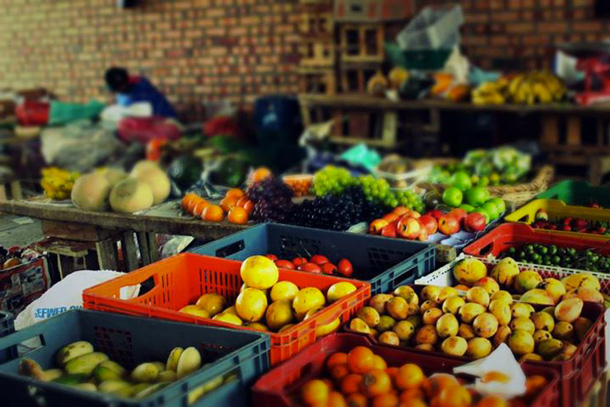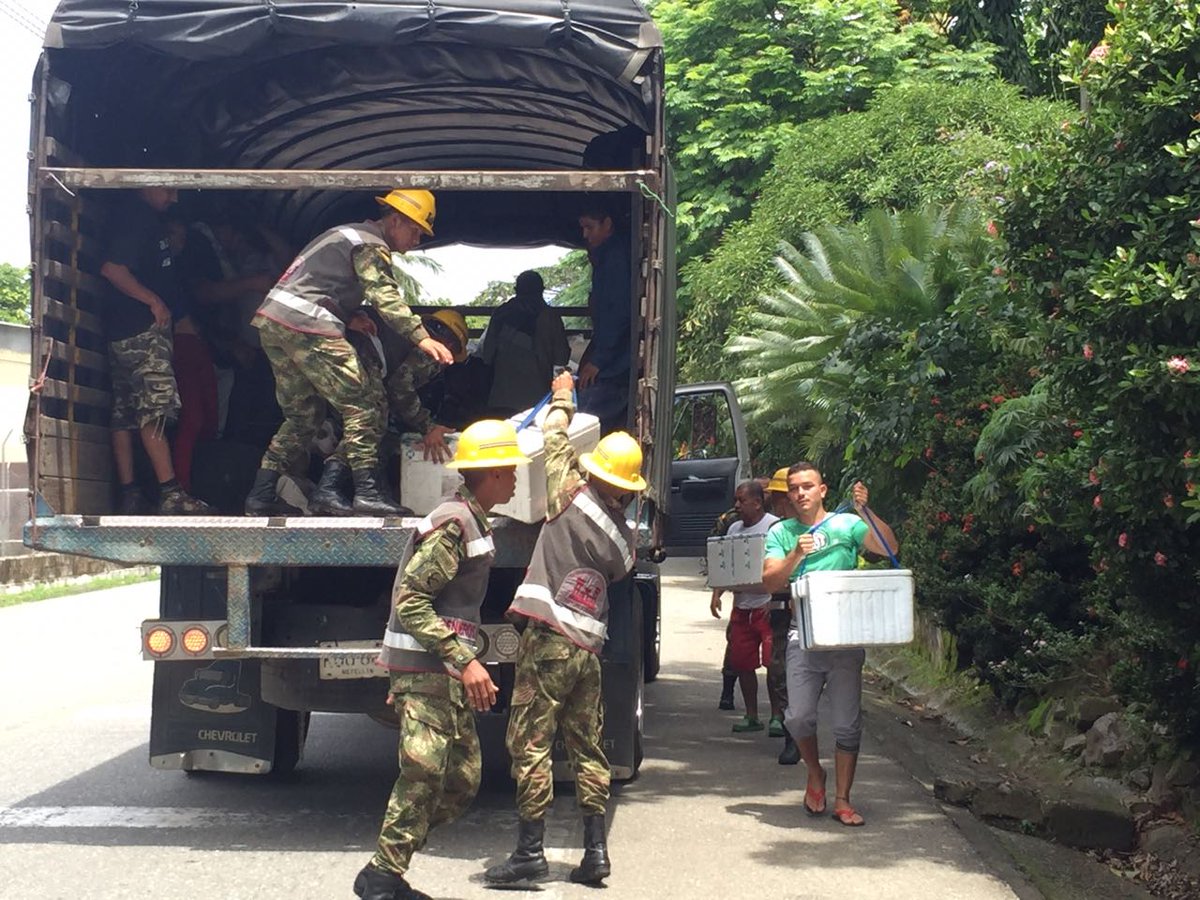
Some of the amazing variety available at organic markets. Photo: Grupo Semillas
Marian Romero discovers that the organic agriculture in Colombia is flourishing, in spite of figures that might suggest otherwise
To go by official figures, which show government-certified areas of organic farming on a downward trend, organic agriculture is in decline. But this is far from the full story. Demand for ecological products and a desire from farming groups to revive more sustainable practices have fuelled a healthy organic market in Bogotá and other Colombian cities. Ecological agriculture is alive and kicking.
Since 1999, the amount of land used worldwide for organic agriculture has almost quadrupled and revenues have increased almost fivefold, according to a recent report from the Research Institute of Organic Agriculture. Whether it’s due to a concern for healthy living or a consciousness about where products have come from, organics continue to grow.
Overall, Latin America makes up 15% of the organic agricultural land in the world with a total of 6.6 million hectares in 2013. It was the only region to show a decrease in total organic land use from 2012 to 2013. The report says this is due to a loss of large amounts of grassland in Argentina, the area’s organic heavyweight. Other countries, like Peru have dramatically increased their organic production – up from 216,756 hectares in 2010 to 388,448 in 2013.
On paper, organic agriculture in Colombia is actually declining. According to the Ministry of Agriculture, the area of land certified as organic reached its peak in 2006 with 50,713 hectares, while today there are about 47,000 hectares.
Germán Vélez, director of Grupo Semillas, a non-profit organisation that supports indigenous and other groups in the protection of natural resources and development of sustainable systems, believes that a key issue in Colombia is the focus of the policy established by the government in 2008: Food and Nutritional Security. The policy concentrates primarily on protecting people from hunger and ensuring the population has access to adequate food in a timely manner but largely ignores sustainability.
“Even though this strategy is crucial for Colombia, especially for those territories and populations with higher levels of deprivation and vulnerability, it leaves aside the bigger concept of food sovereignty. This notion includes not only food security, but self-sufficiency in terms of food production and consumption. This holistic view would help the country to win back its agricultural independence, which it used to have until a couple of decades ago, and it would open the door to organic agriculture, with healthier and more eco-friendly practices”, said Vélez.
The Food Security policy is based on premises of quality and efficiency. It doesn’t take into account issues like the importance of protecting land and water sources, employment generation, and health considerations, nor the percentage of production on Colombian soil.
What that means is that intensive agriculture takes centre stage and organic agriculture becomes a very exclusive practice.
 Legally organic
Legally organic
In 2006, the government passed a resolution that covers all aspects of production, processing, packaging, labelling, storage, certification, importation and marketing for ecological products to be consumed in the country.
At that time, there were high expectations for organics, due to the increasing demand for this kind of product in the international market. Soon the export market became more prominent, with bananas and other fruits, cereal, coffee and cocoa.
However, if a farmer wants to take the extra step of certifying their product as ecological/organic for an international market, they have to pay for a third party stamp – such as Soil Association or Rainforest Alliance – and keep renewing it every year.
Angélica Franco, in charge of the Ecological and Agro-ecological Production Department at the Innovation Department of the Ministry of Agriculture, explained that the growth of organic agriculture has been affected by several factors, one of which is the high cost of these third party certifications.
“Colombia has certain regulatory instruments but a structured policy for organic products is missing. It should involve the Ministry of Environment, the Ministry of Commerce as well as other institutions that could contribute to a long term policy for organics in Colombia. The promotion for organic agriculture by the government is currently in development”, said Franco.
This situation does not mean getting a third party certification is impossible. Colombia is one of the four top providers of organic products to the USA, and its organic coffee, cocoa and sugar can be found in stores worldwide. Added to which, different indigenous communities are able to certify their products as organic and market them accordingly.
Ministry of Agriculture figures show that the departments with the most certified organic production are: Magdalena with palm oil and coffee; Cundinamarca with vegetables, fruit and sugarcane; Santander with coffee, cane, cocoa and fruit; Valle del Cauca with sugarcane, coffee, cocoa and fruits; and Cesar with coffee and fruit.
Participatory partnerships: organic markets in Bogotá
There are a number of groups that have been working in the main cities to rescue the traditional way of growing food in Colombia, as it was before the agrochemicals arrived in the 60s and 70s.
Even though they are not an organised network, and they do not receive support from the government, these groups of farmers follow sustainable practices, such as land and water care, optimisation of natural resources, and use of non-genetically modified seeds and products.
Semilla Andina is one such organisation. They work with partners that come from different rural regions in and around Bogotá. Director, Marianne Torres, told us that for them certification is too expensive and does not affect their clientele.
These organic farmers are not certified; their commerce is based on a participatory guarantee system. Each member is committed to ecological principles and they work together to ensure all practices involved are 100% organic.
“Since Semilla Andina started in 2013, we have grown continually. We started with a couple of partners and now we have 20, we used to make three different flavoured jams and now we make eight. Interest in organic practices is growing for both producers and consumers. The reason why Colombia appears to have a decrease in its organic farming area is they are not taking the non-certified producers into account. Colombia is one of the few countries that does not have a legitimised participatory guarantee system. In Brazil, Argentina and Uruguay this system is recognised by the government, has its own stamp, it is equivalent to a third party certification, and they can export products to Europe with it”, explained Torres.
Semilla Andina opens its doors every other Saturday in Casa Kilele, a cultural house in Chapinero. They work with a fair commerce policy. All sorts of fruits and vegetables can be found and also some transformed products such as jams, marinades and granolas. Semilla Andina also has an online store that delivers on Fridays.
Organic markets are popular in Bogotá, with stores throughout the city. There are several websites that gather rural and urban organic farmers and sell their products online. Also, the Botanic Garden supports a number of producers and organises different events to promote them.
While buying organic may be a bit more expensive than the agrochemical products, it is more than compensated for by the healthier yet better tasting products that also offer more sustainable land practices and more employment for farmers.





